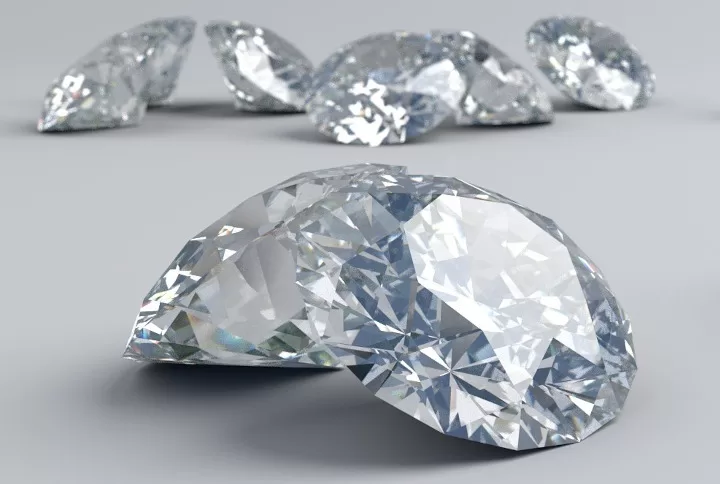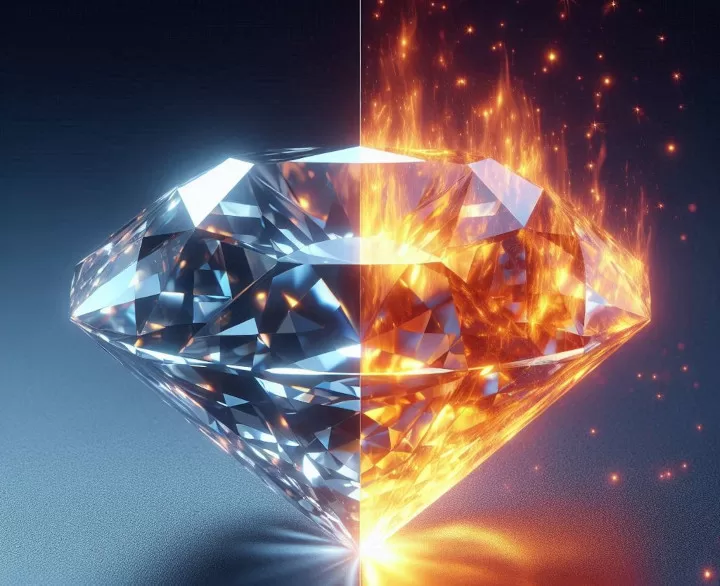Ever wonder how a diamond's brilliance is formed? Diamonds are created through a process called crystallization, where molten rock (magma) cools and hardens into solid crystals of carbon atoms. These crystals reflect light in such a way that they produce dazzling sparkles, giving diamonds their famous brilliance.
Let's dive into the world of diamond brilliance and discover what makes these gems so special!

Diamond brilliance refers to how much white light a diamond reflects. The more white light a diamond reflects, the more brilliant it appears. This sparkle, light, and fire are what make diamonds shine so brightly. When comparing diamonds of similar carat weight and color, brilliance can significantly impact their value.
The most brilliant diamonds are often the clearest and have the fewest flaws, which is why they're sometimes called "white" diamonds.
A diamond's cut is crucial in determining its brilliance. The cut refers to the shape of the diamond and how it reflects light. There are two main types of cuts: brilliant cuts and step cuts.

Brilliance measures how much light a diamond reflects. Fire, on the other hand, refers to the diamond's ability to sparkle and emit light from within. Some diamonds look brilliant but don't sparkle as much. A diamond with good fire has an inner glow that shows the stone's depth and dimension. When buying a diamond, you should consider both brilliance and fire for the most vibrant and dazzling look.
When evaluating diamonds, experts use the 4 Cs: Cut, Carat, Clarity, and Color. Understanding these can help you choose the perfect diamond.
A diamond's cut is as important as its carat and clarity when determining its value. The cut affects how well a diamond reflects light.
An objective way to measure brilliance is the Brilliance Ratio, which is the ratio between the area of a diamond's face perpendicular to the line of sight and the size of its face parallel to the line of sight. This ratio, calculated by dividing the height by the width of a diamond's face, helps determine how bright a diamond will appear.
Many factors contribute to a diamond's brilliance, but the cut is the most important. A well-cut diamond maximizes its potential brilliance and, with proper care, can maintain its glow for generations.
Yes, diamonds can lose their brilliance, but it’s usually due to external factors rather than any inherent property of the diamond itself. Here are some reasons why a diamond might appear less brilliant over time:
To keep your diamond sparkling and brilliant, follow these maintenance tips:
By taking good care of your diamond, you can ensure that it maintains its brilliance and sparkle for generations to come.
The term "brilliant" often confuses people because it's used interchangeably with "diamond." However, "diamond" refers to the precious stone itself, while "brilliant" denotes a specific cut of the diamond. The brilliant cut is designed to optimize a diamond's appearance and light reflection. A well-cut brilliant diamond, with 57 facets, has intense brilliance and high appeal.
Of all diamond shapes, the brilliant cut shines the brightest, making it highly sought after for engagement rings and other jewelry. The cut quality, including proportions, symmetry, and polish, significantly influences a diamond's brilliance. Diamonds with other shapes, known as "fancy shapes" (like marquise, pear, oval, heart, and emerald), each have unique characteristics. Some people prefer these shapes for a more personal or original touch.
Understanding diamond brilliance helps you appreciate the dazzling beauty of these precious gems. Whether you choose a classic brilliant cut or a unique fancy shape, knowing how brilliance and fire contribute to a diamond's overall quality will guide you in selecting the perfect stone.
So next time you admire a sparkling diamond, you'll know a bit more about what makes it shine!
4819 S. Monarch Pl, Ontario, CA 91762 (online-only store)
639 S. Hill St., Booth B-5, Los Angeles, CA 90014
Phone: (626) 420-8718
About | Contact | privacy policy | disclaimer
© 2025 LoiTheJewelryGuy.com · All rights reserved.